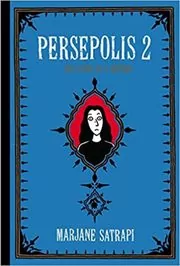The Joy Luck Club Summary
Author: Amy Tan
This page offers our The Joy Luck Club summary (Amy Tan's book). It opens with an overview of the book, and follows with a concise chapter-by-chapter summary.
Drafted with AI assistance and reviewed by a human editor.
As an Amazon Associate, we earn from qualifying purchases (at no extra cost to you).
This book has 2 recommenders!
Overview
This narrative unfolds through the intermingled tales of tension between Chinese immigrant mothers and their daughters, born and raised in America. The focus lies on Jing-mei's journey to China to meet her half-siblings, twins Chwun Yu and Chwun Hwa, who were left behind amidst the chaos of World War II during their mother, Suyuan's, desperate escape from the Japanese invasion of Kweilin. Jing-mei, born to a different father in America much later, steps into her deceased mother's shoes, assuming her role in a mahjong club that her mother had introduced in San Francisco, which featured three of her mother’s closest friends and fellow immigrants. They continuously encourage Jing-mei to venture to China and reveal to her sisters their mother’s life story. However, Jing-mei doubts her ability to tell her mother’s tale accurately, inducing fear in the three older women that their daughters, much like Jing-mei, may not fully understand or value their mothers' stories.
The narrative is divided into four distinct sections, each offering four separate stories. The first part involves the mothers recounting their relationships with their own mothers, expressing concern that their daughters will not remember them as vividly. The second section narrates the daughters’ childhood memories of their mothers, thereby proving the mothers’ anxieties to be at least partially baseless. The third set of narratives revolve around the daughters’ adult tribulations—marital issues and career problems. Despite their belief that their mothers’ outdated notions are irrelevant to their American lifestyles, their quest for solutions inevitably leads them back to their relationships with the older generation. The final section follows the mothers as they attempt to provide solutions and support to their daughters, in doing so, enriching their understanding of themselves.
Despite Jing-mei's apprehensions about her competency in articulating her mother’s life, Suyuan’s story diffuses throughout the narrative largely through Jing-mei’s voice. This represents the struggle to perpetuate the mother-daughter bond across cultural and generational differences; Jing-mei, as her mother’s daughter, embodies the very bond that forms the crux of Suyuan’s story. Jing-mei's trip to China and her efforts to acquaint her half-siblings with their mother's memory strengthens the mother-daughter relationships. Her journey signifies the reconciliation of Suyuan’s two lives, two cultures, and the mother-daughter bond, bringing closure and resolution, not just to her mother’s tale, but also to her own. It also instills hope in the other members of the mahjong club that they too can reconcile the antagonisms in their lives between past and present, cultures, and generations.
Edited by
Software engineer whose passion for tracking book recommendations from podcasts inspired the creation of MRB.
Lead investor at 3one4 Capital whose startup expertise and love for books helped shaped MRB and its growth.







Comments
Did we miss something? Have feedback?
Help us improve this page by sharing your thoughts